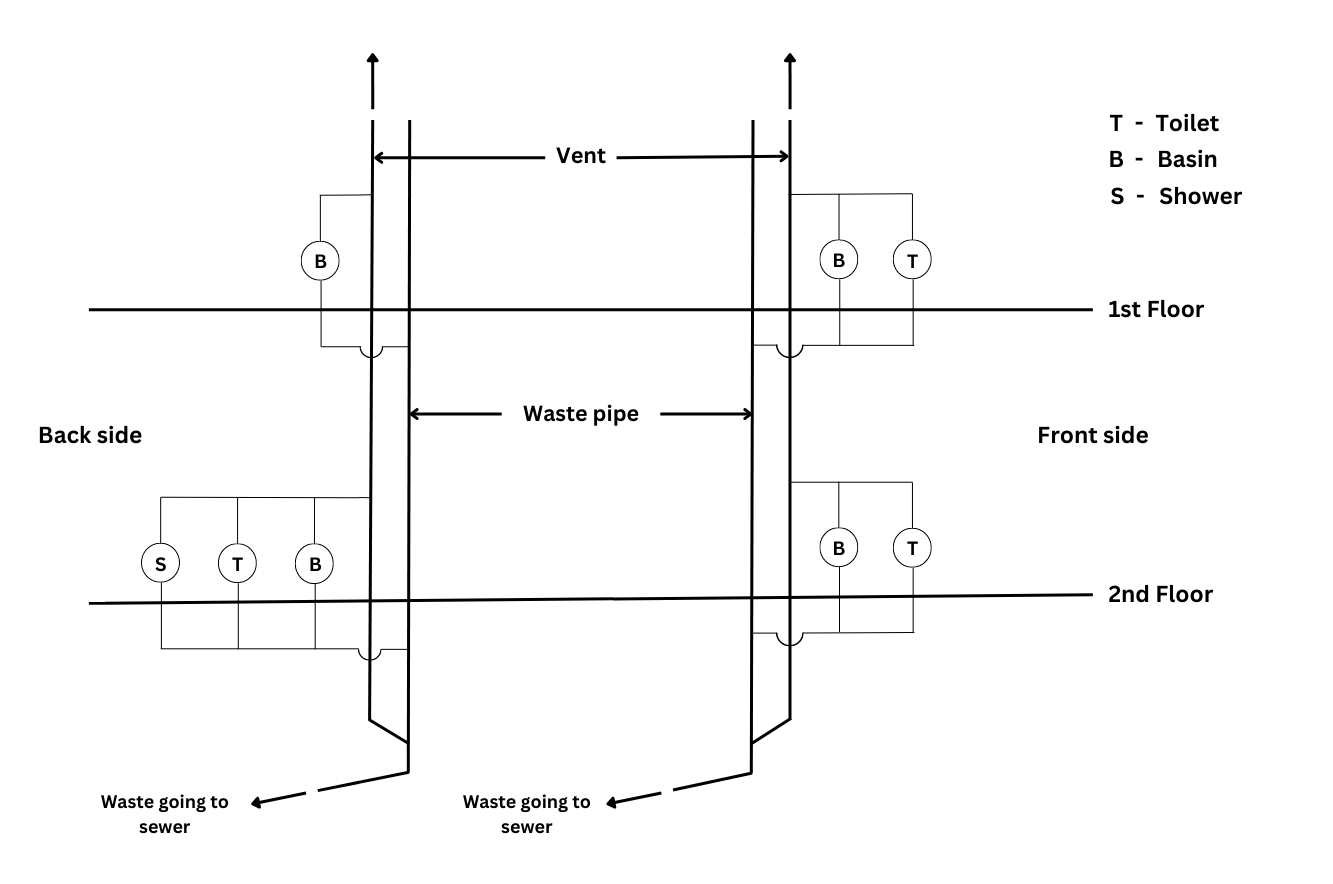3. Complete Activity 13.3 (Page 158). Study the sewage route in your home/school/building. Do the following:
- Make a line diagram of the sewage route.
- Walk down the street or survey the campus to find the number of manholes.
- If possible, observe open drain and record which living organisms are found in and around it.
Answer: The activity can be carried out in the following way:
Aim: To draw the sewage system in my building and study the sewage systems in the neighbourhood.
Materials Required: Paper, pencil.
Procedure:
Part 1:
(i) Study the pipe routes in the building and try to visualize how the interconnected system works. Talk to building maintenance staff for details on how sewage route works.
(ii) Now make a line diagram of the sewage route.
Part 2:
Walk down the street in your neighbourhood and count the number of manholes.
Part 3:
Observe an open drain and record which living organisms are found in it and around it.
Observations:
Part 1:
The diagram of the sewage rotes in the building shows how are the basins, toilets, showers etc are connected to the main waste pipe (connected to the sewer system) and the vent:

Part 2:
There were 4 manholes equally spaced 50 m apart in my neighbourhood.
Part 3:
There were diseases-causing insects like mosquitoes, flies and also algae and moss were growing on the open drains. There was also some plastic packets, rotten food and other trash lying around one of them.
Conclusions: The sewage route in people’s homes and other buildings is connected with the sewage system underground. Proper cleaning and maintenance of drains, covering of drains, raising awareness about the harmful effects will ensure proper sanitation and prevent diseases.
“Study the sewage route in your home/school/building. Do the following:
- Make a line diagram of the sewage route.
- Walk down the street or survey the campus to find the number of manholes.
- If possible, observe open drain and record which living organisms are found in and around it.” – Solved.
Related Links:
Solution to Extended Learning Problem 1
Solution to Extended Learning Problem 2
Solution to Extended Learning Problem 3
Solution to Activity 13.1
Solution to Activity 13.2
Solution to Activity 13.3
Solution to Activity 13.4


